5 Baseball Cards that Marked the Beginning
...of something big, something red, something not to be asterisked
Today, we celebrate the 90th birthday of a great baseball gentleman and underrated eight-time All-Star and seven-time Gold Glover… Bill White!
White made most of his hay for the 1960s St. Louis Cardinals, but that’s not where he got his start.
So, let’s head down that path and look at the first baseball cards of players with the teams that made them famous (and vice versa) even though they started big league life elsewhere.
1960 Topps Bill White (#355)
White actually debuted for the 1956 New York Giants, smacking 22 home runs with 59 RBI and 15 stolen bases. He’d spend 1957 in the military before moving to San Francisco with the team in 1958.
White only made 26 appearances for the Giants that summer, though, who were flush with young slugging talent like Orlando Cepeda, a rising Willie McCovey, and a still-just-27 Willie Mays.
So, after the season, the Giants traded White and Ray Jablonski to theCardinals for Don Choate and Sam Jones.
White was an All-Star (twice!) in 1959 and never looked back. Topps caught the new marriage in their 1960 set, as shown in the beauty above.
1960 Topps Roger Maris All-Star (#565)
Yes, another 1960 Topps card. But The Real One gave us enough variety that year, and Maris gave us enough high-wattage superstardom that this All-Star card doesn’t feel redundant (vis-à-vis the White above) at all.
Anyway, Maris’ exploits for the Yankees in the early 1960s are the stuff of legend, but he actually began his career with the Cleveland Indians, debuting in 1957 after spending three seasons in the Tribe’s minor league system.
The Indians traded Maris to the Kansas City A’s in mid-1958 and he became an All-Star for the first time in 1959. That December, K.C. traded him to the Yankees, and Topps captured him in his Pinstripe glory here on this card.
The gigantic “60” is especially appropriate for a Maris card considering that he won the American League MVP that year and that that’s the number he was chasing as he swatted toward Babe Ruth’s single-season home run record.
1962 Topps Harmon Killebrew (#70)
OK, so maybe this one is a bit of bait-and-switch.
After all, Killebrew didn’t change franchises until he signed with the Royals in January of 1975, after the Twins released him.
But Killer did change teams when his team changed itself. Huh?
You probably know this, but…
Killebrew signed with the Washington Senators as an amateur free agent in June of 1954.
He debuted in the majors later that same month, at age 17.
He was a part-timer in the majors through 1955, then split time between the minors (mostly) and majors from 1956-1958.
He finally stuck in Washington in 1959, when he hit 42 home runs to lead the American League.
He hit 31 more long balls for the Senators in 1960.
He had Topps baseball cards showing him with the Sens in 1955, 1956, 1958, and 1959.
The Senators moved north to become the Minnesota Twins prior to the 1961 season, even though…
The Washington Senators also played in the American League that season — an expansion team awarded to D.C. when the original Senators left town.
Killebrew’s 1961 Topps card listed him with the Twins but made him a hatless wonder.
Yikes.
All of which makes the 1962 Topps woodgrained beauty Killer’s first real Twins card. And there’s no denying he did most of his horsehide lumberjacking up north.
By the by, Killebrew helped the Twins to an American League pennant (1965) and the first two American League West crowns (1969 and 1970). He never did get a World Series ring.
But those second-wave Senators finally did, in 2023, fifty-one years after they became the Texas Rangers.
1965 Topps Lou Brock (#540)
This is arguably the other, less famous side of the Brock coin that’s fronted by the 1962 Topps card showing him as a rookie with the Cubs.
And, of course, the trade that sent Brock, Jack Spring, and Paul Toth to the Cards in exchange for Ernie Broglio, Doug Clemens, and Bobby Shantz is usually hailed as one of the most lopsided in history.
And also of course, Brock thrived in St. Louis, helping the Cardinals win two World Series and another pennant during the 1960s while establishing himself as the greatest base-stealer the game had ever seen. At least until Rickey Henderson came along.
This smiling shot of Brock in the classic rah-rah 1965 Topps pennant design pretty much sums up all that goodness that flowed southwest when Brock left the Windy City.
1972 Topps Joe Morgan (#752)
When was the Big Red Machine born?
Like most teams great, bad, or in between, the 1970s Reds transformed into what they would ultimately become through the accretion of talent and personalities over the course of several years.
But if you were forced to pick a birthdate? For my money, you’d be hard-pressed to find a more fitting calendar block than November 29, 1971.
On that date, the Reds traded Tommy Helms, Lee May, and Jimmy Stewart to the Houston Astros for Ed Armbrister, Jack Billingham, César Gerónimo, and Denis Menke.
Oh yeah — and Joe Morgan.
No matter who else was already on the team, there’s no way the Reds would have become THE REDS they became without Morgan. Who else would you have put at second base who could hit, run, and field his way to two National League MVP Awards? That exactly coincided with Cincy’s two titles?
Rogers Hornsby, maybe? Eddie Collins? Maybe, but you’d have also needed a Big Red Time Machine.
So, December of 1971 was pivotal, but it was also too late to get Morgan airbrushed up for his regular card in the 1972 Topps set, at #132.
But it was just in time for Topps to get a real first picture of Morgan as a Red and then stamp TRADED on #752. It’s a beautiful creation, marking the man who put the finishing stamp on another beautiful creation.
—
Which “first card with the team what brung you” cards are your favorite?
I’d love to hear your picks, but please — no Frank Robinson Orioles cards. Or Curt Flood with the Cardinals.
And for the love of all that’s hobby, no Harry Spilman with the Astros. It’s all just too much for a decrepit Reds fan to bear.
Thanks for reading,
—Adam




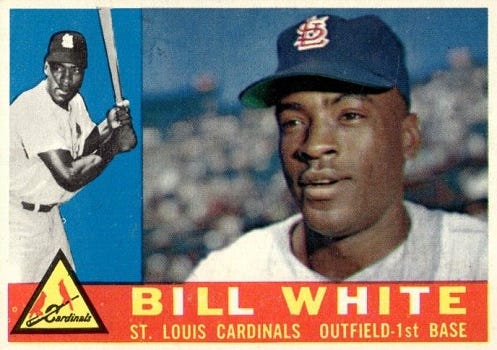
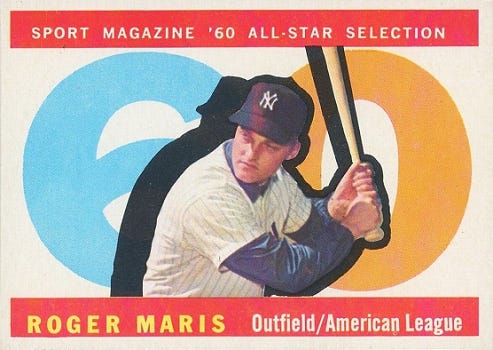
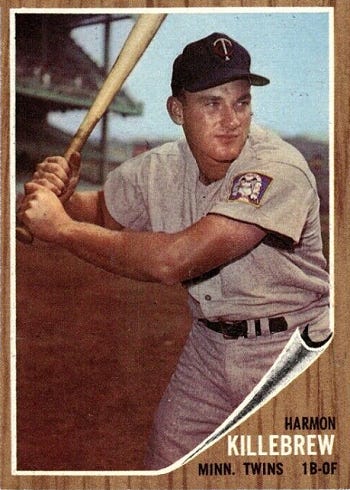
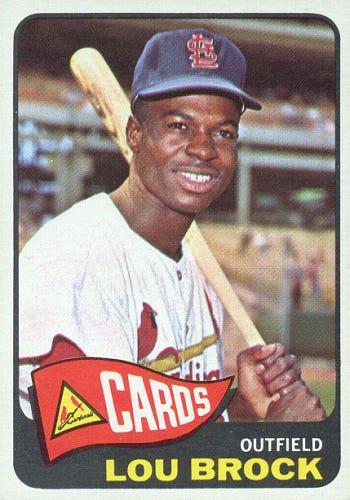
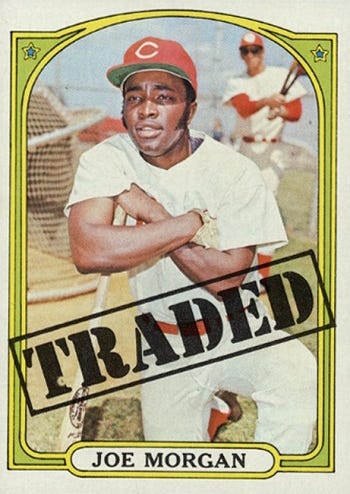
Thanks for the Bill White mention; the man put together a great all-around baseball career, but those of us who were Yankee fans in the '70's/'80's tuning into WPIX 11 will always love him most for being the wise, patient and eminently listenable antidote to Phil Rizzuto's friendly lunacy. And Lou Brock was also a fine gent . . . and I believe he invented and patented the 'Brock-a-brella'; a nifty hands-free umbrella that fit like a hat on your head! Why didn't that take off? Are there other great inventors among our baseball heroes?
73 Topps Graig Nettles. Right after the big home run swing though it’s unclear if he missed and the ball is nestled in the catcher’s mitt, he nubbed a grounder over to short or he popped it over the short porch in right. But the best part is Nettles appears to be wearing the rare light blue, non-pinstriped home Yankee uniform. This card must be savored